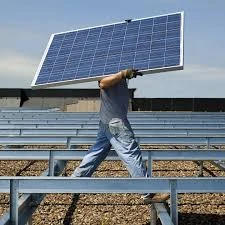Grid-connected Inverter with Power Limiting Functionality for Enhanced Energy Management
Understanding Grid Tie Inverters with Limiters
As the world moves towards a more sustainable energy future, grid tie inverters (GTIs) have emerged as a crucial component in renewable energy systems, particularly in solar power installations. A grid tie inverter serves as the interface between solar panels and the electric grid, converting direct current (DC) generated by solar panels into alternating current (AC) that can be fed into the electricity grid. However, to optimize performance and ensure safety, many systems now incorporate limiters, creating what is known as a grid tie inverter with limiter.
The Role of Grid Tie Inverters
The primary function of a grid tie inverter is to synchronize the solar energy produced with the utility grid’s supply. As solar energy is harvested during the day, the inverter allows excess electricity to flow back into the grid, benefiting both the homeowner and the utility. By enabling net metering, homeowners can receive credits for the energy they supply, thus reducing their electricity bills and contributing to a greener environment.
However, the integration of renewable energy into the existing power infrastructure poses several challenges. One significant issue is the need to manage the amount of electricity sent to the grid to avoid overwhelming the local distribution system. This is where limiters come into play.
What Are Limiters?
Limiters are devices or software features integrated into grid tie inverters to regulate the output power. They are designed to ensure that the inverter does not feed more electricity into the grid than is allowed or necessary. This can be particularly important during periods of low demand or when the grid is experiencing instability. By limiting the power output, the system improves the reliability of the overall grid and minimizes the risk of blackouts or equipment damage.
grid tie inverter with limiter

Benefits of Grid Tie Inverters with Limiters
1. Enhanced Grid Stability By controlling the amount of power fed into the grid, limiters contribute to grid stability, preventing fluctuations that can affect the overall system operation.
2. Compliance with Regulations Many regions have specific regulations regarding the amount of power that can be exported to the grid. Grid tie inverters with limiters help ensure compliance with these regulations, making installations more straightforward and acceptable.
3. Optimized Performance Limiters can optimize the performance of solar installations by adjusting the output based on real-time conditions. For instance, during peak production periods on bright days, a limiter can manage excess power generation to avoid potential overvoltage situations in the grid.
4. Cost-Effectiveness By preventing overproduction during times of low grid demand, limiters can help maximize the economic benefits for homeowners and energy providers alike, thereby creating a more cost-effective solar energy system.
Conclusion
The shift towards renewable energy sources has led to innovative solutions in energy management, particularly with the development of grid tie inverters equipped with limiters. These systems not only enhance the efficiency and reliability of solar installations but also play a vital role in the integration of renewable energy into the existing electrical grid. As technology continues to evolve, grid tie inverters with limiters will become increasingly indispensable, supporting a sustainable energy future that benefits everyone. By optimizing energy production while maintaining grid stability, these advanced inverters represent a significant step forward in the quest for cleaner and more efficient power systems.
-
Unlocking Energy Freedom with the Off Grid Solar InverterNewsJun.06,2025
-
Unlock More Solar Power with a High-Efficiency Bifacial Solar PanelNewsJun.06,2025
-
Power Your Future with High-Efficiency Monocrystalline Solar PanelsNewsJun.06,2025
-
Next-Gen Solar Power Starts with Micro Solar InvertersNewsJun.06,2025
-
Harnessing Peak Efficiency with the On Grid Solar InverterNewsJun.06,2025
-
Discover Unmatched Efficiency with the Latest String Solar InverterNewsJun.06,2025







